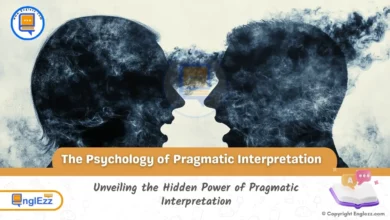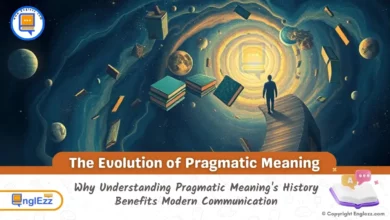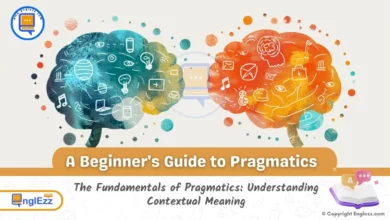Have you ever considered the immense power that lies within the words we speak? Enter the realm of Speech Acts and Pragmatic Meaning – an intriguing landscape where language transcends mere words to shape interactions, influence perceptions, and drive communication dynamics. In this captivating journey, we delve into the intricate art of speech acts, exploring not just what is said but how it is said.
Imagine unlocking the key to understanding the subtle nuances that underpin our conversations and unearth the hidden potential within every utterance.
Table of Contents
- Speech Acts and Pragmatic Meaning: An Overview Unveiling the Power of Speech Acts!
- Understanding Speech Acts
- Grasping Pragmatic Meaning
- Mastering Indirect Speech Acts
- The Role of Context in Speech Acts
- Speech Acts Across Cultures
- Mastering the Power of Speech Acts for Effective Communication
- Enhancing Communication Skills Through Speech Acts
- FAQs:
- What are some common examples of direct speech acts?
- How do indirect speech acts differ from direct ones?
- Can cultural differences significantly impact the interpretation of speech acts?
- Why is it essential to consider context when analyzing speech acts?
- How can one improve their communication skills through mastering speech acts?
Speech Acts and Pragmatic Meaning: An Overview Unveiling the Power of Speech Acts!
Speech acts are more than verbal exchanges; they are fundamental building blocks that construct meaning and forge connections in our daily interactions. Diving further, pragmatic meaning emerges as a cornerstone in deciphering the layers of implication woven into our language fabric. It’s not just about semantics; it’s about unraveling the deeper significance embedded in each conversation we engage in.

As we embark on this enlightening expedition, prepare to uncover a whole new dimension to communication – one where words wield unparalleled influence, and intentions resonate far beyond their literal interpretations. Are you ready to embark on this enlightening voyage through Speech Acts and Pragmatic Meaning? Dive in as we unravel the enigmatic magic concealed within our everyday conversations!
Understanding Speech Acts
In the realm of linguistics and communication studies, speech acts play a profound role in shaping the way we interact and convey meaning through language. Defined as actions performed via utterances, speech acts go beyond mere words to encompass the intentions behind them. These actions can be categorized into different types based on their functions and effects on communication. The three primary classifications of speech acts are declarative, interrogative, and imperative.
Always consider the context in which you are communicating to choose the most appropriate speech act. For instance, when speaking with your boss, a direct and assertive speech act might be more suitable for discussing work-related issues, while a more indirect approach could be better for addressing sensitive topics with friends or family members.
Declarative speech acts are statements that declare or assert a proposition. For example, when someone says, “The meeting starts at 2 p.m.,” they are making a declarative statement conveying information about the meeting time. Interrogative speech acts, on the other hand, involve asking questions to elicit information or prompt a response.
- An example would be, “Are you coming to the party tonight?” which seeks a confirmation or denial from the listener.
- Lastly, imperative speech acts consist of commands or requests intended to influence others’ actions.
- Phrases like “Please pass me the salt” exemplify imperatives by directing someone to perform a specific action.
By understanding these different types of speech acts and their functions, individuals can navigate various conversational contexts effectively. Whether asserting facts, seeking clarification, or issuing commands, mastering the art of deploying appropriate speech acts is crucial for clear and impactful communication.
Grasping Pragmatic Meaning
In the realm of communication, pragmatic meaning plays a crucial role in conveying messages effectively. Unlike semantic meaning, which focuses on the literal interpretation of words or sentences, pragmatic meaning delves into the context, intentions, and implications behind the words spoken. It goes beyond just understanding what is being said to also encompass why it is being said and how it should be interpreted.
- For instance, if someone says “It’s cold in here,” the semantic meaning might indicate a simple observation about the temperature. However, the pragmatic meaning could imply a subtle hint for someone to adjust the thermostat without directly asking.
Distinguishing between semantic and pragmatic meanings is key to grasping the intricacies of communication. While semantic meaning deals with the explicit content of a message, pragmatic meaning involves understanding the implied meanings based on context, social norms, and shared knowledge between communicators.
Consider a common scenario where someone asks “Can you pass me that pen?” The semantic meaning is a straightforward question about passing an object. However, depending on factors like tone of voice or body language, the pragmatic meaning could convey urgency (if asked quickly) or politeness (if accompanied by a ‘please’).
By recognizing the differences between semantic and pragmatic meanings, individuals can navigate conversations more adeptly and comprehend nuanced layers of communication. Understanding that what is said is not always what is meant enables individuals to decipher hidden cues, navigate social interactions effectively, and interpret messages accurately in various contexts. This distinction empowers individuals to engage in more meaningful exchanges by deciphering not only the words spoken but also their intended implications within diverse communication settings.
The power of direct speech acts lies in their ability to convey messages clearly and explicitly, leaving little room for misinterpretation. Direct speech acts are straightforward expressions where the intended meaning aligns with the actual words spoken. Understanding the literal meaning behind direct speech acts is crucial for effective communication, as it ensures that the message sent is received accurately by the listener.
- For example, when someone says, “Please close the door,” they directly request a specific action without any ambiguity, making it easier for the listener to comprehend and respond promptly.
In day-to-day interactions, direct speech acts are instrumental in conveying information efficiently. Whether giving instructions, making requests, or stating facts, using direct speech acts can eliminate confusion and enhance communication clarity. By being precise and unambiguous in our language, we minimize the likelihood of misunderstandings and optimize the chances of our intended message being understood as intended. Recognizing and utilizing direct speech acts empowers individuals to communicate more effectively in various contexts ranging from personal conversations to professional settings.
Moreover, mastering direct speech acts not only aids in clear communication but also fosters trust and transparency in relationships. When individuals express themselves directly and authentically through their words, they build credibility and demonstrate sincerity in their interactions. Direct speech acts can serve as a tool for building rapport and establishing mutual understanding between parties involved in a conversation.
By grasping the significance of direct speech acts and practicing their application in different scenarios, individuals can navigate social interactions with confidence and efficacy while fostering meaningful connections based on genuine expression and transparent communication.
Mastering Indirect Speech Acts
In the realm of communication, mastering indirect speech acts is akin to decoding a complex puzzle. Unlike direct speech acts that convey explicit messages, indirect speech acts operate on layers of meaning, often leaving room for interpretation. These subtle forms of expression play a crucial role in conveying polite requests or subtle sarcasm. For instance, consider the scenario where someone says, “It’s cold in here,” which can be an indirect way of requesting to turn up the heat. Understanding these nuances is key to navigating social interactions effectively.
Indirect speech acts possess the remarkable ability to convey politeness without directly stating a demand. In situations where being direct may seem impolite or brash, employing an indirect approach can maintain harmony and respect in communication. For example, instead of bluntly asking someone to do a favor, one might say, “Could you possibly lend me a hand with this?” This indirect formulation softens the request while still achieving the intended goal.
Pay attention not only to what is being said but also to how it is said. Understanding the pragmatic meaning behind someone’s words can help you respond more effectively during conversations. For example, if someone makes an indirect request by saying “It’s chilly in here,” you can infer they want you to adjust the temperature without them explicitly asking.
Conversely, indirect speech acts can also be wielded as tools for subtly expressing sarcasm or irony. By layering statements with underlying meanings different from their surface-level content, individuals can convey humor or critique discreetly. For instance, when someone arrives late and remarks sarcastically, “Fashionably late as always,” they are employing an indirect speech act to subtly point out tardiness in a playful manner. Mastering the art of interpreting and utilizing indirect speech acts is instrumental in enhancing communication skills and fostering nuanced interactions.
The Role of Context in Speech Acts
Context plays a crucial role in shaping the interpretation and effectiveness of speech acts. The way a speech act is perceived can vary significantly depending on the context in which it is used.
- For example, consider the simple statement “It’s warm in here.” If said while rubbing your arms, it could be interpreted as a request to turn up the heat.
However, if said with a flushed face while removing layers of clothing, it might be understood as a desire for cooler temperatures. Thus, understanding the context surrounding a speech act is key to accurately grasping its intended meaning.
Furthermore, context can heavily influence the illocutionary force of a speech act. Illocutionary force refers to the speaker’s intention behind their utterance. For instance, saying “I’m cold” in response to someone asking how you are doing may carry different illocutionary forces depending on whether you are shivering outside on a chilly day or sitting comfortably in front of a fan on a hot summer afternoon. This demonstrates that without considering the contextual cues present during an interaction, one might misinterpret the true implications or intentions behind a speech act.
To delve deeper into how context can shape speech acts, let’s examine the phrase “Could you pass me the salt?” uttered at a formal dinner versus during an informal gathering with friends. In the formal setting, this request may carry an air of politeness and decorum, whereas among friends, it could simply be seen as an informal way of asking for condiments without much formality attached. These examples highlight how nuances in context play a vital role in influencing not only the literal meaning but also the communicative impact of speech acts within different social settings.
Speech Acts Across Cultures
When delving into the realm of speech acts, it becomes evident that cultural nuances play a significant role in shaping communication dynamics. Cultural differences can heavily influence speech acts, impacting their interpretation and effectiveness across diverse contexts. For instance, in some cultures, direct and explicit communication is valued as a sign of honesty and clarity, while in others, indirect or suggestive language may be preferred to maintain politeness and harmony within relationships.
Keep in mind that speech acts can be interpreted differently across cultures. Take time to learn about cultural norms and communication styles of different regions to avoid misunderstandings. For instance, in some cultures, using direct speech acts may come off as rude, while in others, it may be perceived as straightforward and honest.
Cross-cultural communication often faces challenges due to varying interpretations of speech acts. What might be perceived as a straightforward request in one culture could be seen as impolite or aggressive in another. Understanding these cultural subtleties is crucial for effective intercultural communication. For example, the use of humor in speech acts varies greatly across cultures – what may be intended as light-hearted banter in one culture could be construed as offensive or disrespectful in another.
Navigating speech acts across cultures requires sensitivity and awareness of not only linguistic differences but also the underlying cultural norms and values that shape communication behaviors. A simple phrase or gesture can carry different implications based on the cultural context within which it is uttered. By recognizing and respecting these differences, individuals can avoid misunderstandings and foster better cross-cultural relationships through improved communication strategies.
Mastering speech acts is not just about understanding them theoretically; it also involves applying this knowledge in real-world communication scenarios to enhance your interpersonal interactions. Here are some practical tips to help you use appropriate speech acts in different contexts effectively:
Mastering the Power of Speech Acts for Effective Communication
In conclusion, mastering speech acts is paramount for achieving effective communication in various contexts. Understanding how speech acts function allows individuals to convey messages with precision and clarity, avoiding misunderstandings or misinterpretations. By being able to recognize and employ different types of speech acts – whether declarative, interrogative, or imperative – communicators can tailor their language to suit the intended meaning and achieve desired outcomes.
Encouraging further exploration into the nuances and applications of speech act theory opens up a world of possibilities for enhancing communication skills. Delving deeper into indirect speech acts and understanding how context shapes the interpretation of utterances can greatly enhance one’s ability to navigate complex social interactions. For instance, recognizing when an indirect request is couched within polite language can prevent unintended offense and foster smoother interpersonal relations.
By immersing oneself in the study of speech acts and pragmatic meaning, individuals pave the way for clearer, more effective communication strategies. Just as learning a new language opens doors to different cultures, mastering speech acts provides a gateway to understanding diverse communication styles and practices. Embracing the power of speech acts not only improves personal communication but also contributes to fostering better relationships and minimizing conflicts through precise and intentional use of language.
Enhancing Communication Skills Through Speech Acts
In conclusion, understanding speech acts and pragmatic meaning is like unlocking a hidden key to effective communication. By grasping the power of direct and indirect speech acts, as well as the influence of context and cultural differences, individuals can navigate conversations with precision and sensitivity. The nuances of speech act theory provide a deeper insight into how language shapes our interactions and relationships.
As you continue your journey in exploring speech acts and pragmatic meaning, remember that mastering these concepts is not just about words but about building bridges between people. By honing your skills in utilizing different speech act strategies, you can enhance your communication abilities across various contexts and cultures. Embrace the art of effective expression through speech acts as you delve further into the intricate world of language and human interaction.
FAQs:
What are some common examples of direct speech acts?
Direct speech acts include statements like “I promise,” “I bet,” or “I invite” where the speaker’s intention is explicitly stated.
How do indirect speech acts differ from direct ones?
Indirect speech acts involve hidden meanings or intentions behind the words used, requiring the listener to infer the speaker’s true purpose.
Can cultural differences significantly impact the interpretation of speech acts?
Yes, cultural norms and beliefs play a crucial role in how speech acts are understood, leading to potential misunderstandings in cross-cultural communication.
Why is it essential to consider context when analyzing speech acts?
Context provides vital cues for interpreting the intended meaning behind a speech act, influencing how it is perceived by others.
How can one improve their communication skills through mastering speech acts?
By practicing different types of speech acts in various situations, individuals can become more adept at conveying their messages effectively while adapting to different social contexts.
By incorporating these tips into your communication practices, you can enhance your ability to convey messages effectively and understand the underlying intentions behind others’ speech acts. Remember that mastering the art of speech acts goes beyond just words – it involves understanding nuances, adapting to various contexts, and fostering positive interactions through insightful communication strategies.








